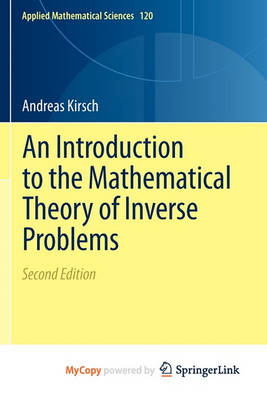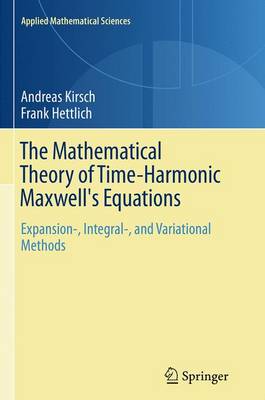Applied Mathematical Sciences
2 primary works
Book 120
An Introduction to the Mathematical Theory of Inverse Problems
by Andreas Kirsch
Published 26 September 1996
This book introduces the reader to the area of inverse problems. A relatively new branch of Applied Mathematics, the study of inverse problems is of vital interest to many areas of science and technology such as geophysical exploration, system identification, nondestructive testing and ultrasonic tomography. The aim of this book is twofold: in the first part, the reader is exposed to the basic notions and difficulties encountered with ill-posed problems. Basic properties of regularization methods for linear ill-posed problems are studied by means of several simple analytical and numerical examples.The second part of the book presents two special nonlinear inverse problems in detail - the inverse spectral problem and the inverse scattering problem. The corresponding direct problems are studied with respect to existence, uniqueness and continuous dependence on parameters. Then some theoretical results as well as numerical procedures for the inverse problems are discussed. The choice of material and its presentation in the book are new, thus making it particularly suitable for graduate students. Basic knowledge of real analysis is assumed.
Book 190
The Mathematical Theory of Time-Harmonic Maxwell's Equations
by Andreas Kirsch and Frank Hettlich
Published 2 December 2014
This book gives a concise introduction to the basic techniques needed for the theoretical analysis of the Maxwell Equations, and filters in an elegant way the essential parts, e.g., concerning the various function spaces needed to rigorously investigate the boundary integral equations and variational equations. The book arose from lectures taught by the authors over many years and can be helpful in designing graduate courses for mathematically orientated students on electromagnetic wave propagation problems. The students should have some knowledge on vector analysis (curves, surfaces, divergence theorem) and functional analysis (normed spaces, Hilbert spaces, linear and bounded operators, dual space). Written in an accessible manner, topics are first approached with simpler scale Helmholtz Equations before turning to Maxwell Equations. There are examples and exercises throughout the book. It will be useful for graduate students and researchers in applied mathematics and engineers working in the theoretical approach to electromagnetic wave propagation.

